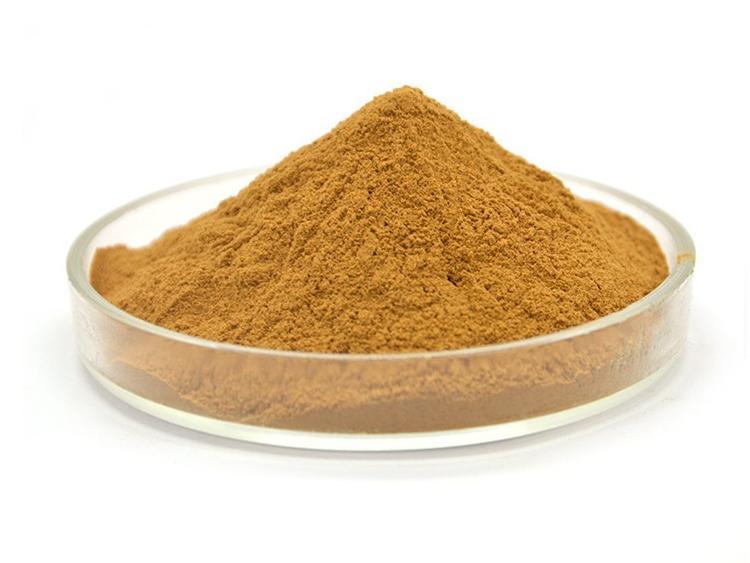イチョウ葉エキスの抗菌活性に関する研究
イチョウ, also known as the white ginkgo, is a specialty resource of China, with a possession accounting for more than 70% of the world'、総额。銀杏は中国で重要なクラスi保護植物であり、世界の1つです#39の最も古い残存植物。研究銀杏の葉抽出(GBE)など物質活躍するフラボノイドを多く含んだ製品はlactones、phenols、ウェルビーイングブームと相まって、多糖类、、锖などいろいろな生物活動抗菌△免疫強化、消炎anti-viral、血糖引き下げ、高脂血引き下げ、anti-tumor、抗がん[10]。中でもフラボノイドは、イチョウの中でも最も有効な成分の一つで、40種類もあります。食品、医薬品、健康製品、化粧品などの分野で広く使用されています。銀杏エキスの抽出過程や生物活性に関する研究が盛んであり,近年,銀杏エキス(gbe)の抗菌性に関する研究が注目されている。ここ数年のイチョウの葉エキスの抗菌活性の研究の全面的な分析を提供し、イチョウの葉エキスの抗菌活性の研究の参考にします。
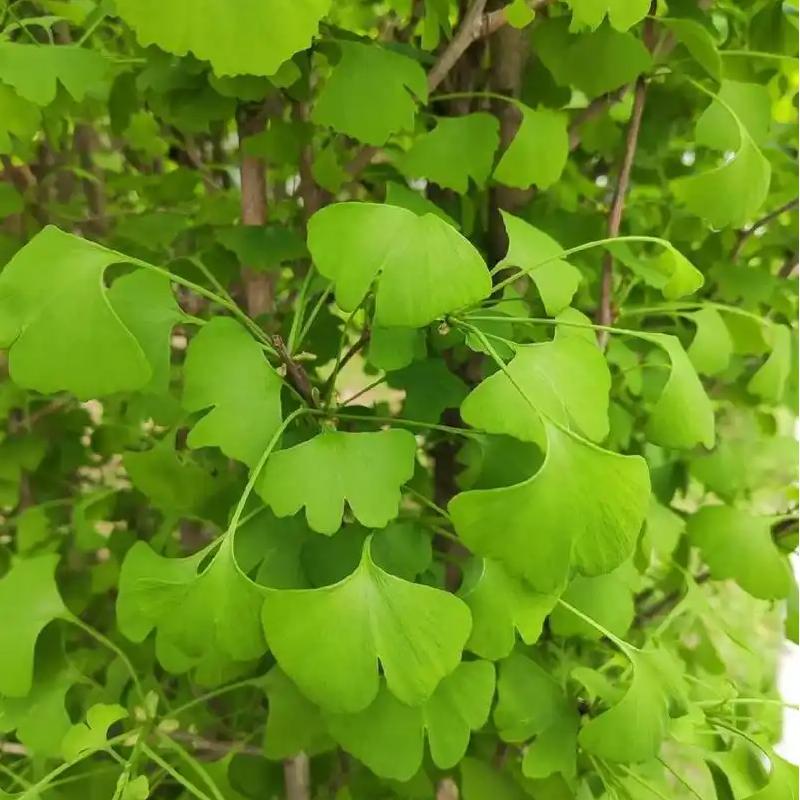
1主な抗菌有効成分とイチョウ葉エキスの作用機序
1.1多糖类
多糖類は、イチョウの重要な機能因子の一つで、主にイチョウの葉に含まれており、強い抗菌、フリーラジカル除去、抗脂質酸化機能を持っています。化学防腐剤の代わりに植物の多糖類を使用して、人間の健康、食品の安全性を促進し、将来の医療の開発に注目する研究が増えています。研究によると、リンカル多糖类をの抗菌効果は主に様々な方法で抗菌効果を達成するために、細胞膜浸透など核酸系形成抑制タンパク質合成の、料、細胞壁成立と共に干渉、紗絵子さんが一番好きなantimetabolite影响を及ぼすのエネルギー代謝システム[12]。他の研究では、細胞内の乳酸脱水素酵素の放出を検出し、litsea cubeba精油がvibrio vulnificusの細胞膜に損傷を与えるかどうかを調べるために透過電子顕微鏡を使用している。その結果、litsea cubeba精油はvibrio vulnificusの細胞膜を損傷することができ、これはイチョウのビブリオ多糖類の抗菌作用のメカニズムのためのいくつかの参照値であることを示しました。
120フラボノイド
のmain active ingredient in ginkgo leaf extract is flavonoids, most of which are found in the leaves. There are about 40 types, including mainly monflavonoids, diflavonoids and catechins. Among the monflavonoids, kaempferol, quercetin and isorhamnetin have the highest content and are considered to be the truly active substances in ginkgo total flavonoids. Flavonoids have the functions of effectively removing toxic peroxyl radicals, lowering blood lipids, promoting blood circulation and cerebral circulation. Hu Xiao et al. [13] showed that flavonoids have a good antibacterial effect, and the antibacterial mechanism is that flavonoids, which are polyphenolic compounds, have an acidic pH and can denature fungal proteins or destroy the integrity of cell membranes, thereby causing functional disorders in microorganisms and thus exerting an antibacterial effect. Xu Fang [14] combined the structure of flavonoids in ginkgo biloba extract with the mechanism of antimicrobial action, and speculated that the mechanism of GBE'の抗菌作用は、フラボノイドが糖と結合してフラボノイド配糖体を形成し、細菌の細胞壁のグリコシド結合を加水分解し、細菌の細胞壁の構造を破壊し、細菌を死亡させることである。
1.3 Ginkgolides
ginkgolides tree lacquerフェノール物質は、銀杏の葉、種子、外皮に広く含まれており、そのほとんどは銀杏の外皮に含まれています。ギンゴリン酸、ギンゴリド、ギンゲチンの3つのカテゴリーに分けることができます。ギンゴリドは、それらのアレルゲン性、変異原性および免疫毒性特性のために、イチョウのビobaの有毒で有害な物質と考えられています。しかし、研究によると、イチョウは抗腫瘍、抗菌、静菌、抗酸化、殺虫などの多くの薬理作用があることが示されています。植物病原性真菌9種、動物病原性細菌10種、細菌2種、真菌4種に対して抗菌作用があることが報告されています[15]。
2. イチョウエキスの抗菌効果
2.1. 植物病原菌に対するイチョウエキスの抗菌作用
多くの研究がそれを示しているginkgo biloba extract has a bacteriostatic effect on a variety of plant pathogenic fungi (such as Phomopsis citricarpa, Pyrenophora teres, Venturia inaequalis, Colletotrichum gloeosporioides, Alternaria alternata, Monilinia fructicola, etc.). The magnitude of the bacteriostatic effect varies depending on the method used to extract the active bacteriostatic ingredients of ginkgo biloba, and is related to the concentration of the active bacteriostatic ingredients in the ginkgo biloba extract. Lin Qinghong [16] conducted an in-vitro antibacterial and insecticidal preliminary study on ginkgo biloba seed coat extract, and carried out an in-vitro antibacterial experiment, isolating eight major harmful bacteria from various plants (Streptomyces helianthus, Phytophthora capsici, Pythium ultimum, Pythium aphanidermatum, Ralstonia solanacearum, Capsicum anthracnose, Solanum lycopersicum white-silk, Brassica oleracea black-spot), and a ginkgo seed coat culture medium with a certain gradient concentration was prepared to study the antibacterial effect of the ginkgo seed coat extract. The results showed that ginkgo extract had a bacteriostatic effect on the eight main pathogens, and the bacteriostatic effect of the undiluted extract and the extract diluted five times was 100% (the growth rate of the eight pathogens was 0), while the growth of the pathogens in the control group was normal. Meanwhile, the antibacterial effect of the ginkgo extract on the medium diluted 10 times also reached 45% to 84% for the 8 types of bacteria, with the best effect of 84% against the anthracnose bacterium of Strelitzia reginae and the weakest effect of 45% against the anthracnose bacterium of cabbage.
fu qiangqiangら[17]は、ギンゴリドの抽出・分離方法、検出方法、薬理効果および製剤に関する研究において、ギンゴリドは合計9種類の植物病原性細菌に対して静菌作用を有すると結論付けた。meng zhaoliらは[18]、4種の植物病原性細菌に対するイチョウエキスの静菌効果を調べた。静菌実験では,イチョウの根,茎,葉,核の石油エーテル及びアセトン抽出物を用いた。抗菌実験では,石油エーテル及びアセトン抽出物及びイチョウ果実のエタノール抽出物を用いた。

その結果、銀杏の各器官の石油エーテルとアセトン抽出物は、トウモロコシの葉の斑点菌とリンゴの輪の腐敗菌に一定の抗菌作用があり、葉の抽出物は最も強い抗菌作用があった。イチョウの果実から抽出されたエタノール抽出物は、リンゴの腐敗菌に最も顕著な抗菌作用を示し、10倍抽出物では100%、25倍抽出物では50%の抗菌作用を示した。また、リンゴの乾燥腐り菌に対しても強力な抗菌作用があり、10倍抽出物で68.5%、25倍抽出物で44.4%の抗菌作用があります。銀杏葉エキスをこれらの勉強ばっかりなが示すのはには静菌影響の工場が、病原性菌類静菌効果は銀杏葉エキスを濃度との密接な结:GBEの濃度が高いほど、静菌効果がより明らかに濃度が低下するため、静菌効果が弱くなります。イチョウの葉のpenicillium citrinumに対する抗菌作用についてのyu linhuaらの研究では[19]、イチョウの葉抽出物の抗菌作用は、濃度が増すにつれて増加するが、時間が経つにつれて減少することがわかった。
2.2動物の一般的な病原菌に対するイチョウ葉エキスの抗菌作用
現時点では、ほとんどの研究antibacterial effect of ginkgo biloba extract focuses on the antibacterial effect on common pathogenic bacteria in animals. This is currently a hotspot in the study of the antibacterial effect of GBE, and most of the research focuses on the antibacterial effect on bacteria such as Staphylococcus aureus, Escherichia coli, and Pasteurella multocida. A variety of studies have shown that GBE has a good antibacterial effect on common pathogenic bacteria in animals, and the antibacterial effect of ginkgo biloba extract is currently the most researched.
のような学問において銀杏葉エキスの抗菌作用がある曲小华らだ。[20]銀杏葉エキスを積極的な物質と結論づけ安定しているが、取引熱短期の暖房高温抗菌の活動に影响がない、しかも最強抗菌活動は中立pH環境です黄起春らは、同じ作用を持続させるために、イチョウの葉の抽出物の濃度が高いほど、抗菌率が高いと考えている。一定の時間内に同じ濃度の銀杏葉エキスを抽出するには、作用時間が長いほど抗菌率が高くなります。また、抗菌効果は抽出した成分や抽出方法によっても異なります。
Xu Yan et al. [22] studied the antibacterial effect of ginkgo biloba extract and used a dichotomy to study the inhibitory effect of ginkgo biloba extract on Staphylococcus aureus, Escherichia coli, and Bacillus subtilis. The water-soluble and fat-soluble components of ginkgo biloba were extracted separately and subjected to antibacterial experiments. The results showed that the fat-soluble component extract of ginkgo biloba had a significant inhibitory effect on Staphylococcus aureus, Escherichia coli, and Bacillus subtilis, while the water-soluble extract had no inhibitory effect on Staphylococcus aureus, Escherichia coli, and Bacillus subtilis. This indicates that the thermal stability of ginkgo biloba extract is good, and that extraction at high temperatures does not affect its inhibitory effect on animal pathogenic bacteria.
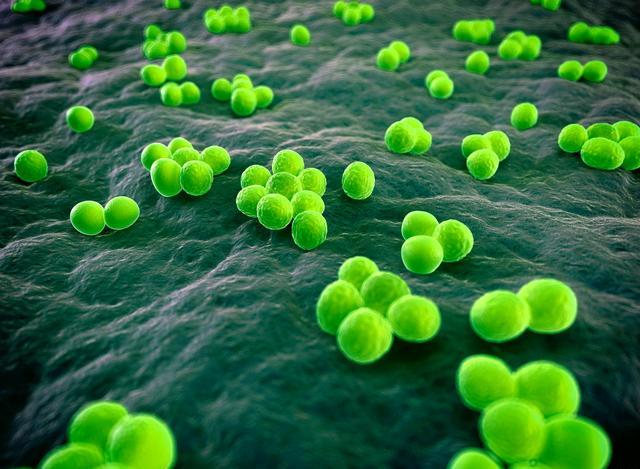
いくつかの研究では、gbeの抗菌効果をいくつかの抗菌薬と比較して、gbeの抗菌効果の程度を調べています。li yanら[23]は、in vitroでgbeの抗菌効果を比較した。超音波細胞破壊装置を用いてイチョウの葉を粉砕し,65°cの定温水浸漬を用いてgbeを抽出した。そこで、gbeの抗菌効果を様々な抗菌薬と比較した。その結果、gbeの大腸菌に対する抗菌効果は、ゲンタマイシン、エンロフロキサシン、スルファジアジン、チロシンよりは良いが、ストレプトマイシンやカナマイシンには及ばないことが分かった。gbeのpasteurella multocidaに対する抗菌効果は、シプロフロキサシン、ゲンタマイシン、スルファジオジン、チロシンよりは良いが、ストレプトマイシンやカナマイシンほどではない。gbeはカナマイシンよりも黄色ブドウ球菌に優れた抗菌効果を示すが、ストレプトマイシン、シプロフロキサシン、ゲンタマイシン、エンロフロキサシン、スルファジアジン、チロシンには及ばない。黄色ブドウ球菌はgbeに対して非常に感受性が高く、pasteurella multocidaとescherichia coliは中程度の感受性を持つ。li yan[24]は、gbeの有効成分の抽出、in vitroでの静菌効果、ブロイラの食事へのgbeの添加に関する研究において、gbeの静菌効果を確認した。また、gbeはブロイラーの免疫機能を向上させることがわかり、開発・応用が期待されます。
2.3イチョウエキスのporphyromonas gingivalisに対するin vitroの静菌効果
イチョウの葉エキスのポルフィロモナスに対するin vitro抗菌作用の研究は、歯周痛治療のための新しい純中国薬の研究に薬理学的基礎を提供することができる。しかし、イチョウエキスの有効成分がポルフィロモナスに及ぼす抗菌作用については、現在のところあまり研究されておらず、今後のイチョウエキスの応用に向けた開発が期待されます。同一濃度のイチョウエキスは、大腸菌や黄色ブドウ球菌よりも抗菌効果が高いという研究結果が出ており、イチョウエキスのギンバランに対する抗菌効果の研究は実用性が高い。江贏椿らた。[25]上で銀杏葉エキスをの抗菌効果Porphyromonas gingivalisに事件を解決体外独自のものより大きかった銀杏の葉とイチョウ柔らかいカプセルPorphyromonas gingivalis体外でと抗菌作用があることが減少し濃度減ってきている。
3異なる方法で抽出したイチョウの活性物質の抗菌効果の比較
The antibacterial effects of ginkgo biloba active substances extracted using different methods are different. Due to the different extraction methods, the active ingredients and concentrations of ginkgo biloba with antibacterial activity will also be different. Comparing the antibacterial effects of ginkgo biloba active substances extracted using different methods can provide a basis for studying the extraction method with the best antibacterial effect. Qu Xiaohua et al. [26] used four methods: boiling under normal pressure, boiling under high pressure, cold ethanol maceration, and microwave extraction, to compare the antibacterial effects of ginkgo biloba active substances. The results showed that the antibacterial effect of the ginkgo biloba extract extracted by cold ethanol maceration was the most obvious, followed by microwave extraction, and finally boiling under normal pressure and boiling under high pressure.
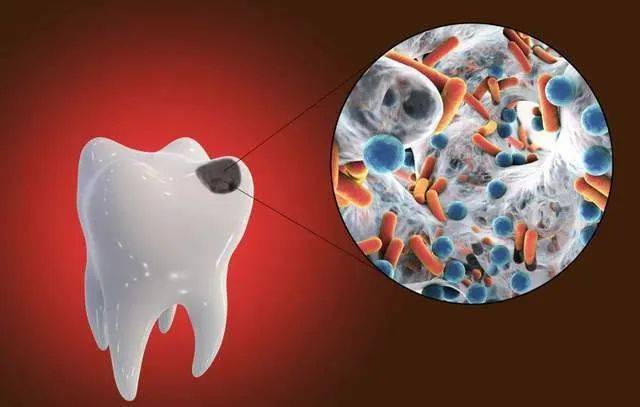
このうち、高圧沸騰で抽出した銀杏葉エキスは、高圧沸騰で抽出した銀杏葉エキスに比べて抗菌作用が顕著で、良好な熱安定性を示した。xu qiyunらは[27]、エタノール抽出法、石油エーテル抽出法、トリクロロメタン抽出法、水抽出法の4つの方法を用いて、イチョウの葉抽出物のペニシリウム・citrinumに対する抗菌効果を比較した。その結果、石油エーテルから抽出したイチョウ葉エキスの抗菌効果が最も高く、次いでトリクロロメタン抽出、水エキスの抗菌効果が最も低かった。これらの研究は、より良い抽出方法を探索することで、イチョウ葉エキスの抗菌効果を効果的に改善できることを示している[28]。
4結論
Ginkgo biloba is a specialty plant in China and is abundant in resources. Studying the antibacterial activity of ginkgo biloba extract can provide a good direction for making full use of ginkgo biloba resources. The antibacterial active ingredients of ginkgo biloba extract can be used instead of pesticides in planting, and can also be used in edible animals to achieve truly pesticide- and veterinary drug-free products, thereby protecting human health. Research on the antibacterial active ingredients of ginkgo biloba extract has certain medicinal and economic value. At present, many antibacterial active ingredients in ginkgo biloba have not yet been discovered, and there is still much medicinal value waiting to be discovered. However, the main problem currently faced is the purification of the antibacterial active substances in ginkgo biloba extract. Only by purifying the active substances can corresponding products be developed, resource utilization maximized, and a material basis provided for greater economic benefits.
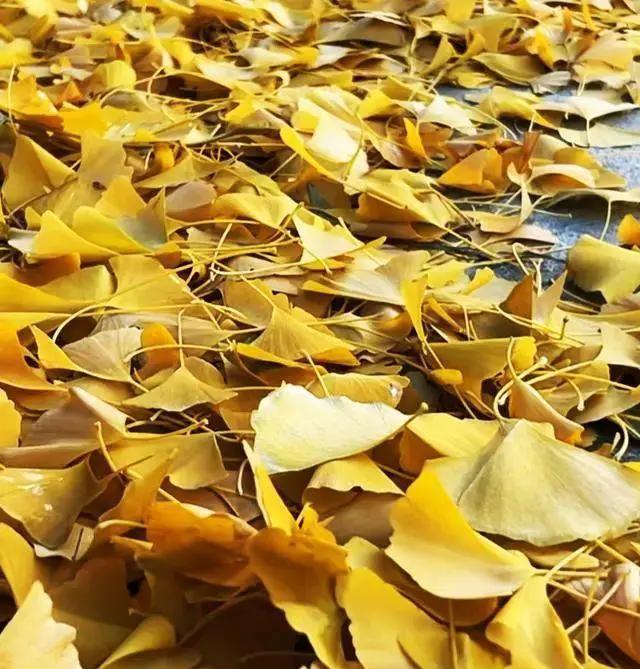
参照
【1】王樹敬、袁天宇、張建寧。イチョウ葉エキスとその有効成分による認知機能の改善に関する研究[j]。^『人事興信録』人事興信録、2018年(平成30年)10月10日、165 -165頁。
[2] liu f k, li x q, yang p, et al。イチョウの葉からの粗フラボノイドの抗酸化作用[j]。中国の果物と野菜、2018(1):19-21。
[3] tao r, wang c, ye j, et al。イチョウ・ビロバポリフェノールの窒素含有およびハロゲン含有誘導体の抗菌活性に関する研究[j]。^ a b c d e f g h『日本の林業と林業』、2016年、29-34頁。
[4] wen r, wang j .イチョウ葉エキスの免疫調節効果に関する研究[j]。^ a b c d e f g h『臨床医学と臨床』、2018年、29-31頁。
[5] zhang lihu, li dongdong, xiao wei, et al。ネットワーク薬理学と分子ドッキングに基づくイチョウ葉エキスの抗炎症機構の予測[j]。中国実験薬理学会誌,2018(7):192-198。
[6] yang fang, yang chun, su jianjia, et al。b型肝炎ウイルスの抗原分泌に対するイチョウエキス(egb761)の阻害作用[j]。中国癌予防制御学会,2011(1):13-15。
[7] shang yudong, zhang zhengyao, ding yunlu, et al。抑止効果の銀杏葉エキスをα-glucosidaseおよびその機構血糖値を下げる効果か[J]。吉林大学紀要(医学),2011(3):427-432。
[8]澍霊。イチョウおよびサルビア菌抽出物および納豆粉末の配合のアジュバント性低脂血症機能に関する研究[d]。^大連理工大学、2017年。
[9] wang xiufeng, ma ruiyang, jing zuoquan, et al。イチョウ葉エキスの抗腫瘍機構に関する研究[j]。the journal of microbiology, 2011(6): 76-79。
[10] niu p, zhao x, yan f, et al。イチョウの葉エキスがacc-2細胞の増殖およびサバイビンおよびtip30遺伝子の発現に及ぼす影響[j]。chinese journal of traditional chinese medicine, 2014, 39(24): 4860-4864。
[11] li yan, yang xiaoyan, lin yuexin, et al。イチョウの有効成分の抽出と抗菌作用に関する研究[j]。2006年(平成18年)4月15日:ダイヤ改正。
[12]趙Qike。イチョウ葉多糖の抽出条件の最適化と抗菌性に関する研究[d]。大連理工大学、2017年。
[13] hu x, bai g, li c, et al。イチョウフラボノイドの抗菌作用に関する研究[j]。^ a b c d e f『人事興信録』第11版(2014年)、61-63頁。
[14] xu f .イチョウ葉エキスのin vitro抗菌および免疫調節効果に関する研究[d]。2014年、湖南農業大学教授。
[15] zhang lei, liu shengliang, zhu shuliang, et al。超音波を用いた熱水抽出法の研究[j]。^「food science and technology and economy, 2018(10):68-71」。food science and technology and economy(2018) . 2018年10月10日閲覧。
[16]林曽慶紅。イチョウ種子エキスの抗菌・殺虫効果に関するin vitro予備研究[a]。中国植物学会会長。中国植物学会創立70周年記念年会(1933-2003)[c]。北京:中国植物学会、2003年。
[17] fu qiangqiang, gao zhenshen, liu lin, et al。ギンゴリン酸の抽出・分離法、検出法、薬理作用および調製に関する研究[j]。中国の薬局,2017(4):547-550。
[18] meng zhaoli, wu xianzhong, gao qingxiao, et al。4つの植物病原性細菌に対するイチョウ葉エキスの静菌効果[j]。^『植物病理学』1995年(4)、357-360頁。
[19] yu linhua, li xiaolie, lan hua, et al。penicillium citrinumに対する銀杏エキスの静菌効果[j]。^『人事興信録』第6版、60-62頁。
【20】ク小華、新玉峰。イチョウ葉エキスの抗菌作用に関する研究[j]。黒竜江省農業科学,2008(1):25-26。
[21] huang qichun, zhang guizhao, lin meixiang, et al。子豚の腸内細菌に対するイチョウ葉エキス及びその薬剤含有血清のin vitro抗菌作用[j]。農業科学江蘇で、2012(10日):" 185-187。
【22】徐燕王少毅イチョウ葉エキスの抗菌作用に関する研究[j]。2006年(平成18年)4月1日-6号機が完成。
[23] li yan, yang xiaoyan, lin yuexin, et al。イチョウ葉抽出物の抗菌作用のin vitro比較[j]。^『仙台市史』通史編(通史編)、505 -505頁。
[24]李岩。イチョウの有効成分の抽出とin vitro抗菌作用とブロイラー食へのイチョウの添加に関する研究[d]。2006年、早稲田大学教授。
[25] jiang yingchun, li hanwei, li yongmei, et al。イチョウエキスのporphyromonas gingivalisに対するin vitro抗菌作用[j]。吉林大学紀要(医学),2014(5):1018-1023。
【26】屈小華、新玉峰、張克英。イチョウの葉から抽出した活性物質の抗菌作用の比較研究[j]。2010年(平成22年)4月1日- 4号機が設置される。
[27] xu qiyun, yao anqing, hu meiying, et al。イチョウエキスのpenicillium citrinumに対する抗菌作用[j]。2006年(平成18年):8 -8号。
【28】莫孝寧、李愛、余啓明。イチョウ多糖類の超音波抽出過程と亜硝酸塩の除去に関する研究[j]。食品科学技術や経済2019(2):~ 93。


 英語
英語 フランス
フランス スペイン
スペイン ロシア
ロシア 韓国
韓国 日本
日本